뉴스&스피킹(영자신문)
하루 10분이면 영어에 대한 두려움을 극복하고 누구나 유창하게 영어를 구사하실 수 있습니다.
-
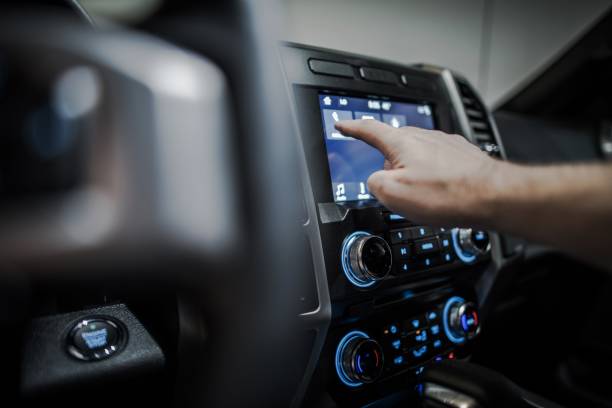 AM Radio Stations Oppose Removing AM Radios from Cars The move by automobile manufacturers to include radios in cars nearly 100 years ago helped spread AM radio across the United States.
AM Radio Stations Oppose Removing AM Radios from Cars The move by automobile manufacturers to include radios in cars nearly 100 years ago helped spread AM radio across the United States.
But now, some carmakers want to stop providing AM radio in their new vehicles.
The first cars to be sold with radios were introduced in the 1930s. They only received one kind of radio transmission, those that broadcast using AM, or amplitude modulation.
After some time, radios could receive transmissions in AM and FM. FM stands for frequency modulation.
For many years, those were the only choices. But after a while, car makers added 8-track players, audio cassette players, compact disc players and eventually Bluetooth connections so people could play music from mobile devices such as an iPhone.
However, cars are no longer sold with 8-track players or compact disc players. And now, some new electric cars are being sold with radios that only receive FM signals. Car makers say the driving systems in electric vehicles interfere with the AM signal.
That concerns the people who own and work at about 4,000 radio stations in the U.S. that broadcast in AM. One of them is in the small town of Dimmitt, Texas. Nancy and Todd Whalen own the radio station KDHN-1470, which has been broadcasting since 1963. They are the only employees, and they talk on the radio every morning. The Whalens have run the station for eight years.
They say they do it, so Dimmitt has something to feel good about. “We feel like what we’ve done and continue to do is provide that, not just for Dimmitt, but for all the small towns in the area that no longer have local radio stations.”
KDHN also runs a translator, or a system that changes the signal so their programs can also be heard on FM. But the AM signal is much stronger. The FM signal covers about a 30-kilometer radius from the transmitter while the AM signal covers 160 kilometers.
Nancy Whalen called the AM signal “our bread and butter since the beginning.”
The reduction in the number of AM stations has many people worried. That includes broadcasters, business owners, farmers and lawmakers. Some broadcasting companies that own AM radio stations are selling their land because it is more profitable than running a radio station.
Amy Klobuchar is a senator from Minnesota. She is concerned about losing AM radio stations. They keep people in her large state informed.
In an online video, Klobuchar said AM radio “gives people the information they need in many of our rural areas…” She noted that “a lot of people drive long distances” in rural areas and listen to the radio in the car. She also said of AM radio: “This is where people find their local news.”
Klobuchar and others are working on the “AM For Every Vehicle Act.”
They want to keep AM radio in cars. The lawmakers say the car makers should find a way to keep AM radio.
When Klobuchar talks about people in rural areas, she is talking about people like Rodney Hunter. He supervises two grain storage structures, called silos, in Texas. He said farmers will listen to the radio on their way to sell grain. Without the news on AM radio, they would not know if grain prices were up or down.
“Farmers are in their (trucks or tractors) going up and down the road,” Hunter said. He added it is easier for them to listen to the agriculture news on AM radio than to try to find the information online.
But the people who run AM radio stations are not just farmers and small-town business people with a sense of civic pride.
About five hours southeast of the grain-storage building, Joann Whang is a pharmacist who listens to KKDA-730 in Dallas, Texas. It is a Korean-language station. At first, Whang said she thought listening to a Korean station was only for old people.
“But it actually was pretty interesting,” she said. She said she got a lot of information and even heard Korean pop songs, known as K-pop.
The station is owned by DK Media Group. The company also runs two Korean-language newspapers. Stephanie Min Kim is the president. She said removing AM from cars would hurt small companies like hers that broadcast in languages other than English. It is too costly to buy a license, or government permission, to broadcast in FM, she said.
Kim once worked for the Korean broadcaster KBS. She said, “We feel that it is our duty to help and support our Korean immigrants integrate into American society.” She said her radio station hosts discussions with experts in law, healthcare and education that help people from Korea learn about life in the U.S.
She said, if AM is removed from cars, the transmissions face an “existential threat.” That means the existence of the stations is threatened.
Radio Caravan is another small broadcaster in Dallas. It broadcasts in Hindi, Tamil and English on AM 700. Aparna Ragnan is a radio host. She said carmakers should find a way to keep AM.
Vaibhav Sheth is the station manager. He said the sound quality of the AM stations is not a problem. He said the information that the stations provide is more important than sound quality. In addition, he notes that AM stations are important in emergencies. The emergency signals go off to alert listeners about bad weather, like a tornado, or a child who is in danger.
“Whatever it is that’s happening,” he said, “it goes to the AM frequency.”
I’m Steve Herman. And I’m Dan Friedell.View -
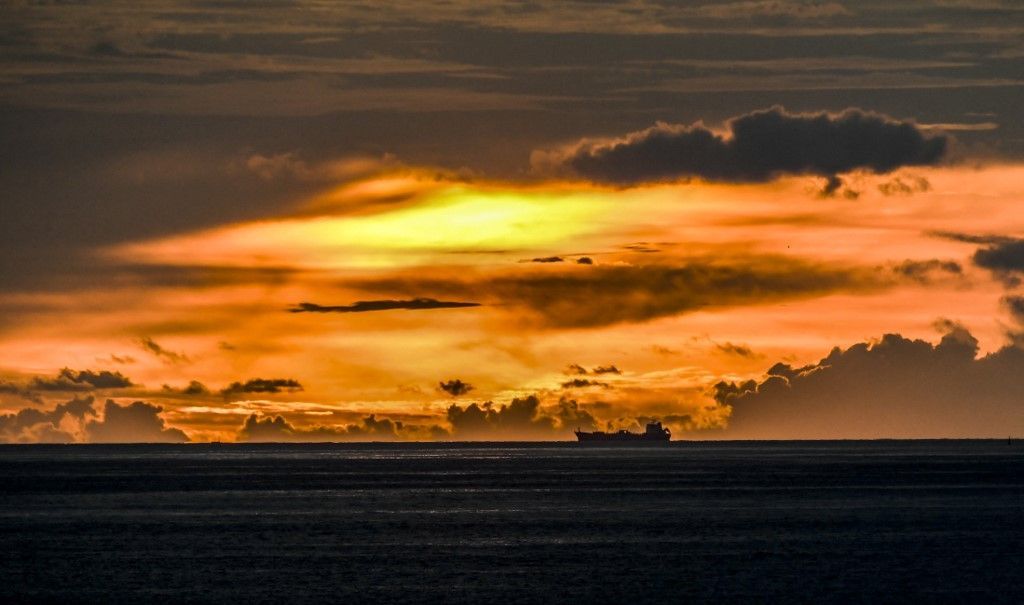 Study: Heat Spreading Ocean Currents Could Collapse by Midcentury A new study has predicted that a system of ocean currents that transports warm water northward could collapse in the next 70 years.
Study: Heat Spreading Ocean Currents Could Collapse by Midcentury A new study has predicted that a system of ocean currents that transports warm water northward could collapse in the next 70 years.
Climate scientists have warned that such collapse could cause sea level rise in the U.S. and extreme weather in Europe.
The currents spread, or circulate, water in the Atlantic Ocean, the U.S. National Oceanic and Atmospheric Administration (NOAA) explains. The currents carry warm water north and cold water south.
Two years ago, the United Nations Intergovernmental Panel on Climate Change said it was unlikely that ocean currents would cause disastrous conditions in the next 80 years or so.
However, the new study recently published in Nature Communications suggests that the huge ocean current system might collapse sooner than some scientists believe.
Altogether, the currents studied by the scientists are known as the Atlantic meridional overturning circulation, or AMOC. It circulates water throughout the Atlantic Ocean. The circulation is very lengthy, taking an estimated 1,000 years to complete. But NOAA says the circulation has been slowing since the mid-1990s.
The Atlantic current called the Gulf Stream is part of this huge current system, NOAA says.
Scientists in the United States and Germany have warned that a further slowdown or complete halt to the circulation process could create more extreme weather in the Northern Hemisphere. It could also cause sea-level rise on the U.S. East Coast and drought in southern Africa. But predictions about the possible timing remain unclear.
In the new study, Danish researchers Peter and Susanne Ditlevsen examined sea surface temperatures in the North Atlantic between 1870 and 2020. Under current conditions, they have suggested the circulation system could collapse as soon as 2025 or as late as 2095.
Their prediction is different from a prediction made by the United Nations’ Intergovernmental Panel on Climate Change (IPCC) in 2021. The IPCC said the collapse was not likely to happen before 2100.
Julio Friedmann is chief scientist at New York City-based Carbon Direct, a carbon management company. He said in a statement he thinks the latest study makes clear that “action must be swift and profound” to reduce major climate risks.
Stefan Rahmstorf co-wrote a 2018 study on ocean currents in the Atlantic. He also published his comments about the Danish-led study on the website RealClimate. Rahmstorf noted that the timing of a collapse of Atlantic Ocean currents remains “highly uncertain.”
He added that he finds the IPCC’s estimate conservative. “Increasingly, the evidence points to the risk being far greater than 10 percent during this century," Rahmstorf wrote. He added that the problem is likely to remain “...rather worrying for the next few decades.”
I’m Bryan Lynn.View -
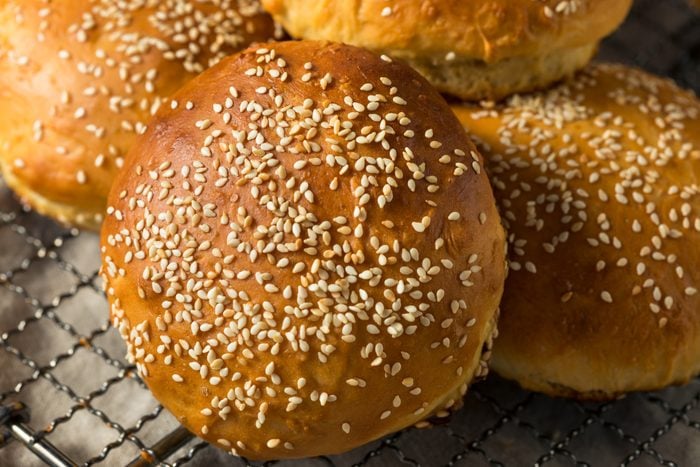 US Agency Permits Sesame to be Added to Foods The United States Food and Drug Administration (FDA) recently said that by law food makers are permitted to add sesame to their products. They also must identify sesame content in their foods on product packaging.
US Agency Permits Sesame to be Added to Foods The United States Food and Drug Administration (FDA) recently said that by law food makers are permitted to add sesame to their products. They also must identify sesame content in their foods on product packaging.
Sesame is the seed of the sesamum or benne plant. It is used to make oil and the seeds themselves are often used on bread or baked goods. The seeds come in black and white colors.
Sesame is used in many foods to add a nutty flavor or some crunch.
But the American non-profit group, the Center for Science in the Public Interest (CSPI), says about 1.6 million people are allergic to the seeds. Someone who is allergic can get very sick after eating the seeds. People with the allergy usually learn to stay away from traditional foods that contain sesame.
The CSPI is protesting to the FDA about a law that went into effect in January.
The Food Allergy Safety, Treatment, Education, and Research Act, known as FASTER, listed sesame as a major allergen requiring identification on packaging for the first time.
Some food companies made changes to their production centers in reaction to the new law. Some cut sesame use completely. Others, however, decided to add sesame to products that did not usually contain it. As long as they identified the sesame on the food packaging, they were obeying the law fully.
The CSPI and other organizations argue that adding sesame to foods that did not contain it in the past limits food choices for allergic people.
Some food companies say it is too hard to prevent sesame from getting into some products, or it is too costly to change their production centers. It is easier to add sesame and identify it legally.
Some restaurants are also adding sesame to their foods and noting it on menus or meal listings in order to meet the requirements of the food law.
Robert Earl is a food safety advocate. He said the practice will put people with food allergies in danger of getting sick. “It puts our community at greater risk,” he said. Earl added that food companies and restaurants adding sesame to products reduces food choices.
Earl said his organization – Food Allergy Research and Education – has received a number of complaints from people who said they got sick by eating formerly “safe” products.
Ruchi Gupta is a children’s doctor at Northwestern University. She is director of the Center for Food Allergy and Asthma research there. Gupta called the FDA’s decision “disappointing,” and noted that the food company and restaurant changes are permitted by law. However, she said she hoped the FDA would have “come out in a way to try to discourage” putting sesame in unusual products.
Robert Califf leads the Food and Drug Administration. In a message posted online in 2023, he wrote about companies adding sesame to their foods. He called it “a practice with an outcome we do not support.” He said it does not break any rule but that it “limits options for consumers who are allergic to sesame.”
He also noted that consumers should “check the label every time you buy a food product – even if you have eaten it before and didn’t have an allergic reaction.”
The F.D.A. also said companies cannot use language like “may contain sesame” if the product does not contain it.
Peter Lurie heads the CSPI. He said he hoped the FDA’s recent statements would send a message to food companies. He said “it’s on the companies to act responsibly,” if the FDA is not going to force them to make changes.
I’m Dan Friedell.View -
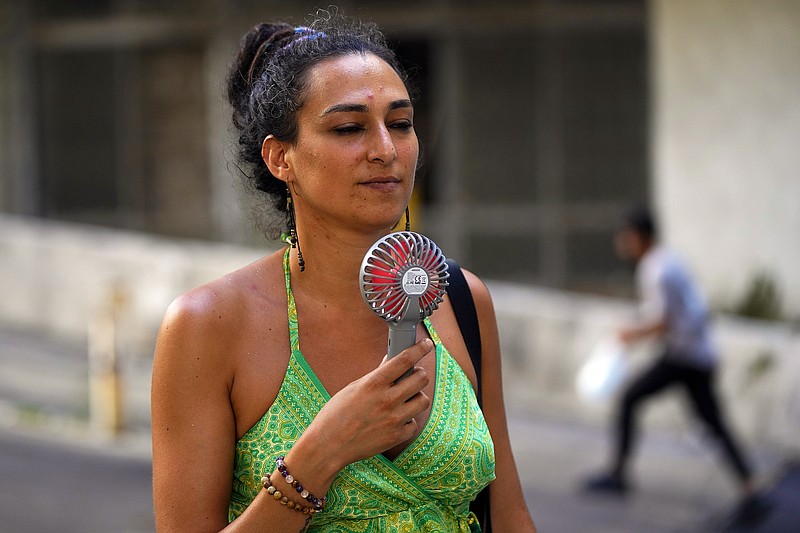 Record-breaking Hot Summer Is Only Half Over At about summer's halfway point, scientists say the world’s record-breaking heat and weather extremes are both unprecedented and unsurprising.
Record-breaking Hot Summer Is Only Half Over At about summer's halfway point, scientists say the world’s record-breaking heat and weather extremes are both unprecedented and unsurprising.
American and European meteorologists also expect a hotter-than-normal August and September.
Gavin Schmidt is a NASA climate scientist. He told The Associated Press, “The heat waves that we’re seeing in the U.S. and in Europe, in China are demolishing records left, right and center. This is not a surprise.”
“We’re going to be seeing this pretty much this year and into next year," Schmidt said. Along with human-caused climate change, there is also the natural El Nino warming of the Pacific Ocean.
Here is a look at what has happened so far this summer:
Record-breaking heat
The month of June this year was the hottest June on record in the world. Scientists say July has been so hot that even before the month was over they could say it was the hottest month on record. In some places, the heat has been deadly.
In Phoenix, Arizona, the last day of June and each day of July has been at least 43 degrees Celsius. The area also set records for the longest period with temperatures at 32 and higher.
El Paso, Texas, had 44 days of 37-degree heat. Schools closed in Nuevo Leon state in northern Mexico a month earlier than normal as temperatures reached 45 degrees.
Beijing, China experienced 27 days of 35 degrees in July. That came after three 40-degree days in June.
Heat records fell all over southern Europe. Sardinia, Italy, hit 47 degrees. Palermo in Sicily broke a record that goes back to 1791 by 2 degrees.
Spain reported nearly 1,000 extra deaths from the heat by mid-July, mostly among older people.
Too much rain
More than 10,000 people had to be evacuated in central Hunan province in China. Heavy rainfall there caused at least 70 houses to collapse. In Yichang, rain caused a landslide that buried a construction site and killed at least one person.
Australia’s Queensland desert got 13 times its normal monthly July rain in just one day.
Thousands of people were evacuated from Delhi in India as rains caused floods and landslides. Heavy rain and flooding caused several deaths in northeastern states of the U.S.
Wildfires and smoke
Too little rain in Greece and Spain worsened wildfires. In the Canary Islands, a fire caused 4,000 people to evacuate and 400 firefighters battling it.
Hot and dry conditions caused about 160 wildfires to break out in Israel in early June.
In northern Quebec, Canada, wildfire smoke spread to create the world’s dirtiest air in cities like New York and Washington, D.C.
As of late July, more than 600 wildfires were out of control in Canada. A record 123,000 square kilometers burned, and fire season is not nearly done. That is an area larger than North Korea.
Water temperatures
Water temperatures in the Florida Keys and off the Everglades hit the high 30s.
The North Atlantic had hot spots that alarmed scientists. The world’s oceans as a whole were the hottest ever in June and got even hotter in July. In Antarctica, sea ice broke record-low levels.
Ocean temperatures take a long time to warm up and cool down, said Victor Gensini who teaches meteorology at the University of Northern Illinois. He added that it does not look good for the rest of the summer.
A hot forecast
U.S. National Weather Service meteorologist Matt Rosencrans expects above normal temperatures for the next three months.
The only possible relief he sees, especially in the hot Atlantic and Gulf of Mexico, is if a hurricane or tropical storm moves through. But the height of hurricane season in September has not even started.
With the summer’s weather extremes so far, University of Pennsylvania climate scientist Michael Mann had one question: “How on God’s Earth are we still burning fossil fuels after witnessing all this?”
I’m Dan Novak.View -
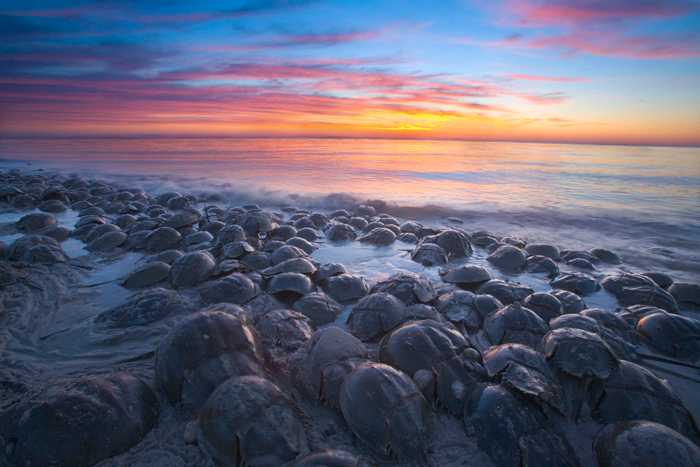 New Rules Aim to Protect Valuable Horseshoe Crabs New rules aim to protect horseshoe crabs, which are used in medical research, and also to support an endangered bird species.
New Rules Aim to Protect Valuable Horseshoe Crabs New rules aim to protect horseshoe crabs, which are used in medical research, and also to support an endangered bird species.
Blue blood from horseshoe crabs is used by researchers to test for dangerous substances in vaccines, medicines and medical devices. The animals are also used by fisherman as bait to catch eels and sea snails.
In addition, the eggs of horseshoe crabs are an important food for an endangered bird called the red knot.
Scientists say horseshoe crabs have been living in ocean environments for more than 400 million years. But they are different from other crabs. They are more closely related to spiders and scorpions. The animals have been decreasing in numbers in areas they live in, called habitats, along the U.S. East Coast.
The blue blood is taken from the animals for medical research. The process returns the crabs to the environment. But many die from the blood harvesting process.
Blood from the crabs can be manufactured into limulus amebocyte lysate, or LAL, a substance used to identify dangerous substances in some medications and vaccines.
Fishermen collect the crabs by hand or with special equipment on boats for use by biomedical companies. The blood – which contains immune cells sensitive to bacteria – is then separated and proteins are processed. It takes many crabs to produce enough blood to fill a single glass tube, which contains cells that are sensitive to bacteria.
New guidelines for dealing with horseshoe crabs were approved in May by the Atlantic States Marine Fisheries Commission. Industry officials said those changes should keep more crabs alive. But, in recent years, environmentalists brought attention to the issue of the horseshoe crabs, including their relationship to the red knot.
Red knots are birds that travel about 30,500 kilometers back and forth from South America to Canada. During their long trip, the birds must stop to eat along the way and horseshoe crabs are an important food.
Bethany Kraft is a coastal conservation specialist with the environmental organization the Audubon Society. Kraft told The Associated Press (AP) that red knots need horseshoe crab eggs to give them enough fuel to complete their long flights. “There's very clear linkage between horseshoe crabs and the survival of the red knot in the coming decades,” she added.
Kraft said horseshoe crabs currently need stronger protection to survive. She and other wildlife conservationists have noted the new guidelines are currently only voluntary. This, they say, still leaves the red knot at risk. They say the bird needs stronger legal protection.
The new guidelines urge best practices for the biomedical industry's harvesting and processing of the crabs. They include measures aimed at limiting exposure to sunlight and keeping crabs cool and wet.
Caitlin Starks is a fishery specialist with the Atlantic States Marine Fisheries Commission. She told the AP the goal of the guidelines “is to give the crabs that are bled a better chance of surviving.”
That is exactly what the new guidelines will do, said Nora Blair, an operations official with Charles River Laboratories. The company manufactures LAL from horseshoe crab blood. Blair was a member of a working group that created the new guidelines along with other industry groups.
Blair said the industry is working to find synthetic materials that could be used for biomedical research. Conservationists have been pushing for years for such a solution. Lonza, a Switzerland-based company that manufactures LAL, offers an animal-free testing solution.
But Blair said that, for now, the wild harvest of horseshoe crabs remains extremely important for drug safety. The animals play an important part in supplying and testing drugs and the coastal environment makes their conservation “imperative,” she added.
I’m Bryan Lynn.View

